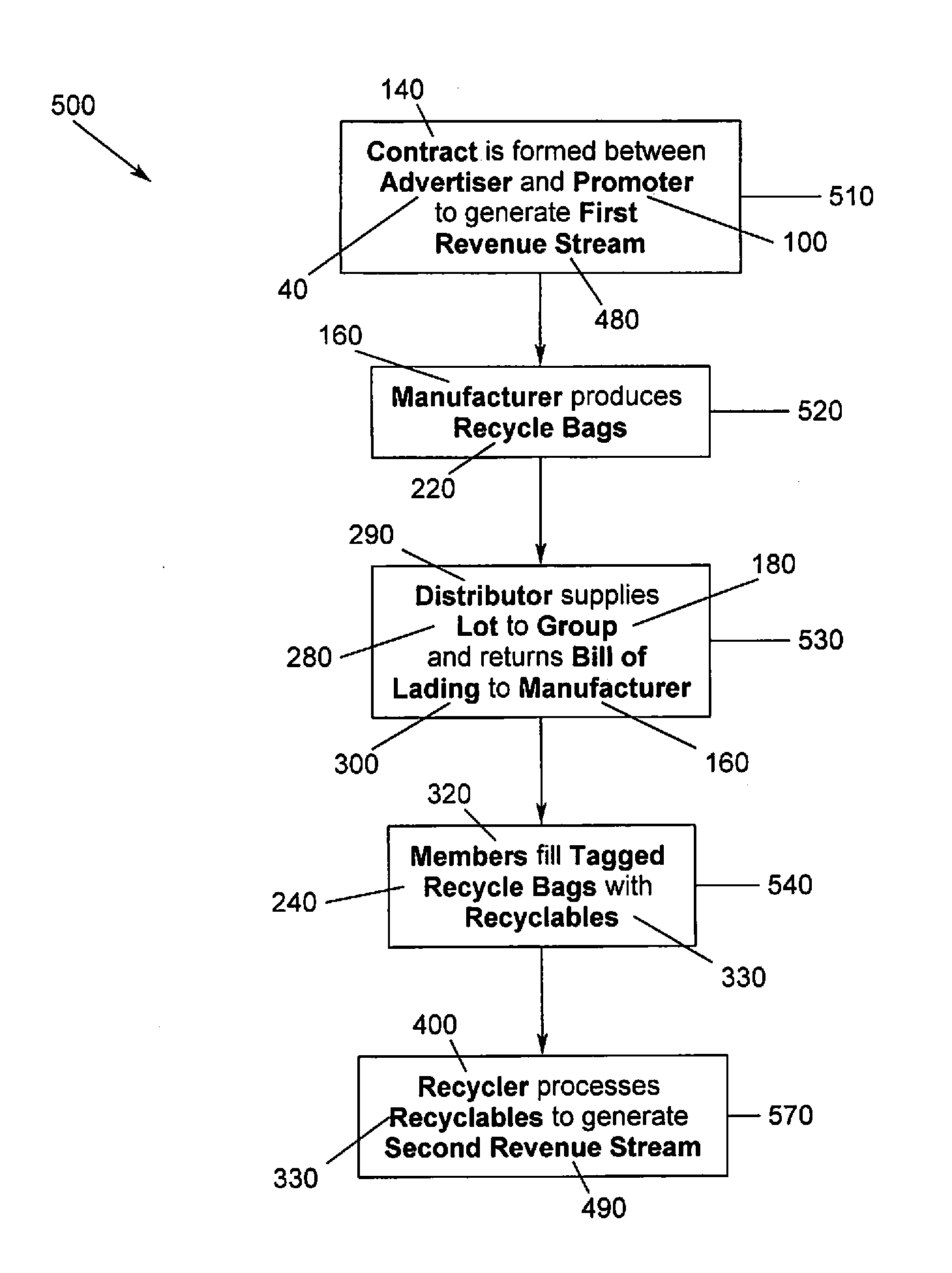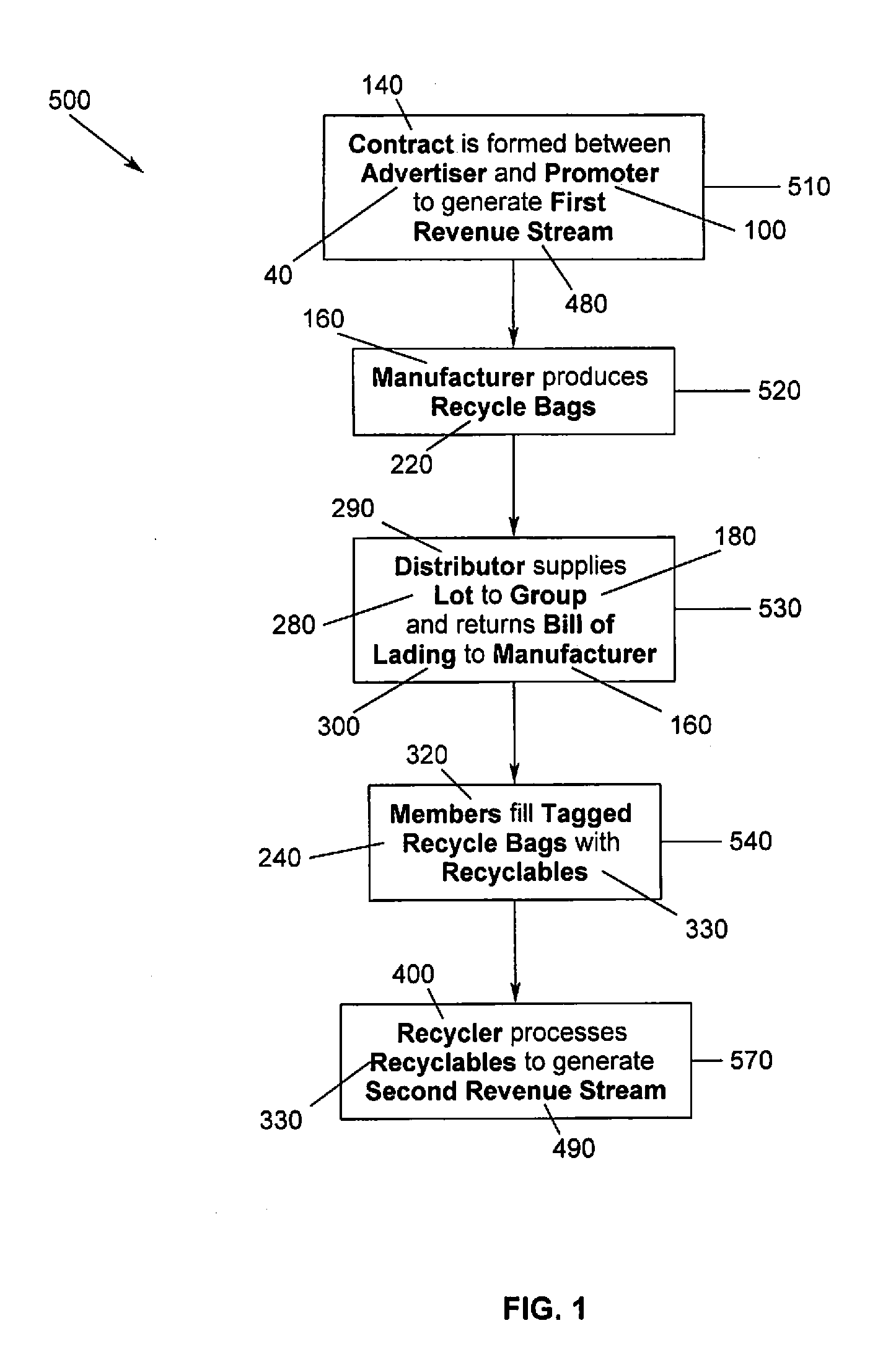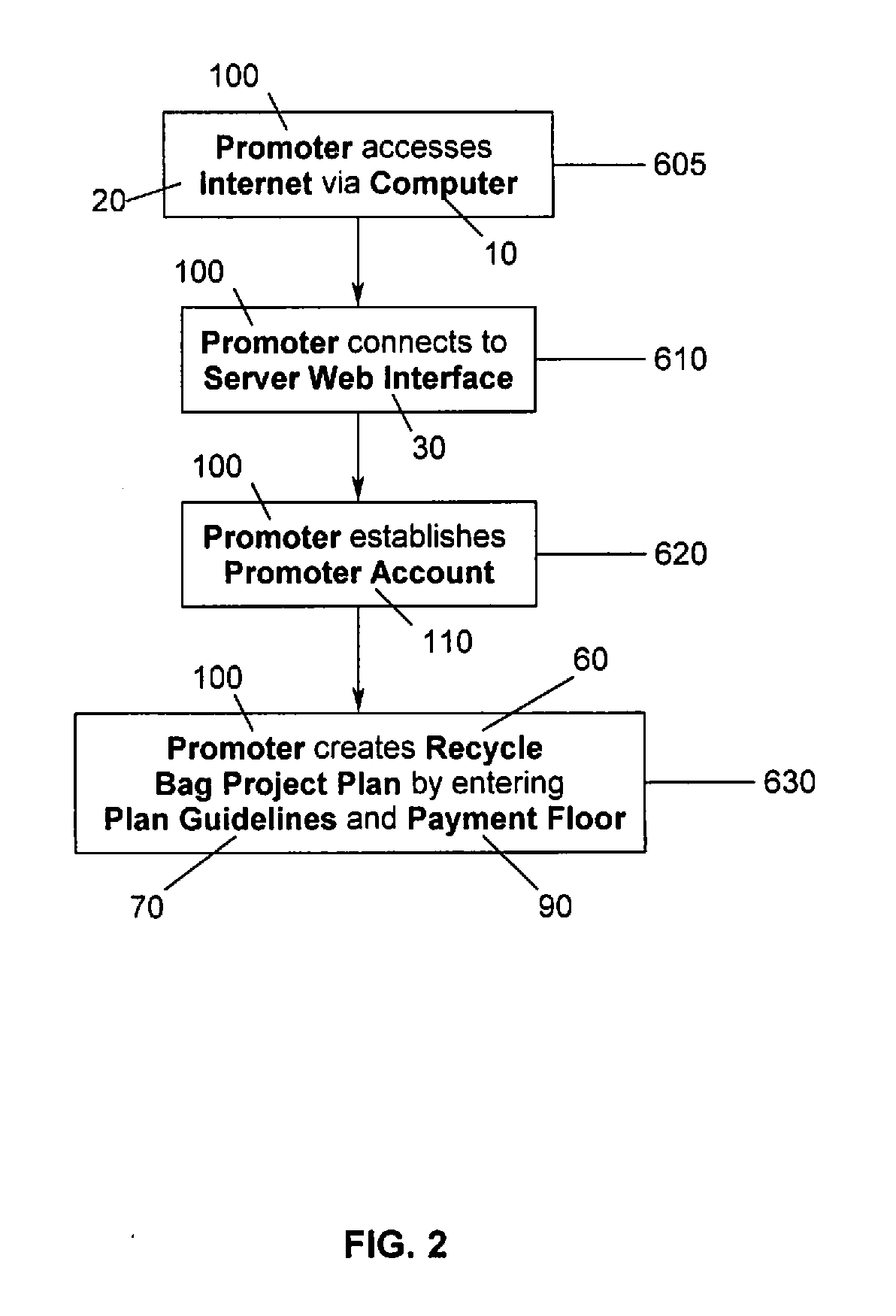Method for Recycling Materials
a technology for recycling materials and materials, applied in sustainable waste treatment, instruments, marketing, etc., can solve the problems of rare large-scale recycling programs, scarce materials, and not produced quickly and cheaply, and achieve the effect of raising awareness of recycling issues
- Summary
- Abstract
- Description
- Claims
- Application Information
AI Technical Summary
Benefits of technology
Problems solved by technology
Method used
Image
Examples
Embodiment Construction
[0064]In describing the preferred and selected alternate embodiments of the present invention, as illustrated in FIGS. 1-13, specific terminology is employed for the sake of clarity. The invention, however, is not intended to be limited to the specific terminology so selected, and it is to be understood that each specific element includes all technical equivalents that operate in a similar manner to accomplish similar functions.
[0065]Referring now to FIGS. 1-5, method for recycling materials 500 comprises contract 140, wherein contract 140 is formed between advertiser 40 and promoter 100 via step 510 resulting in first revenue stream 480.
[0066]Promoter 100 accesses Internet 20 on computer 10 via step 605. Promoter 100 connects to server web interface 30 via step 610. Promoter 100 establishes promoter account 110 via step 620, wherein (as shown in FIG. 3) promoter account 110 comprises promoter alert system 115, and wherein promoter account 110 is stored on server 15.
[0067]Promoter 1...
PUM
 Login to View More
Login to View More Abstract
Description
Claims
Application Information
 Login to View More
Login to View More - R&D
- Intellectual Property
- Life Sciences
- Materials
- Tech Scout
- Unparalleled Data Quality
- Higher Quality Content
- 60% Fewer Hallucinations
Browse by: Latest US Patents, China's latest patents, Technical Efficacy Thesaurus, Application Domain, Technology Topic, Popular Technical Reports.
© 2025 PatSnap. All rights reserved.Legal|Privacy policy|Modern Slavery Act Transparency Statement|Sitemap|About US| Contact US: help@patsnap.com



